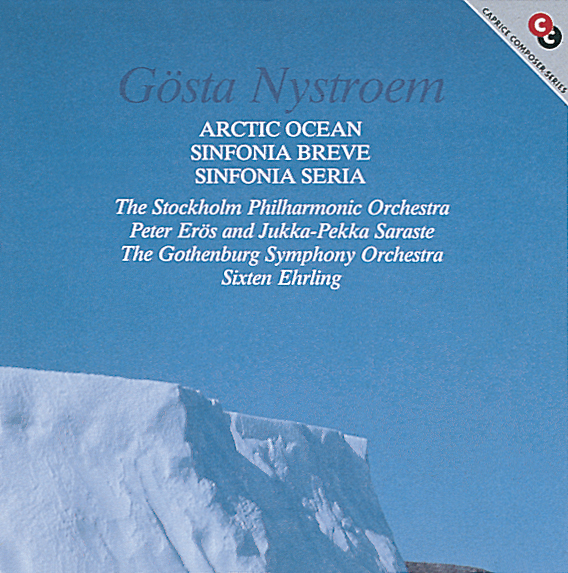Gösta Nystroem
Arctic Ocean, Sinfona Breve, Sinfonia Seria
Two central orchestral works from the first generation of Swedish modernists, Ishavet (Arctic Ocean, 1924–25) and Sinfonia Breve (Symphony No. 1, 1929–31), are presented here together with the later work, Sinfonia Seria (Symphony No. 5, 1963).
The modernist, Nystroem, should have found himself at home in this climate. Those who were at the forefront of new music in Sweden found a friend and mentor in Igor Stravinsky, while it would be some time before Arnold Schönberg’s twelve-tone music became firmly established. Arctic Ocean (Ishavet) is characterized by a soundscape influenced by Claude Debussy, while dissonances from Stravinsky enhance the stormy intricacies – particularly apparent in the second movement’s wild crescendos. The compositions opening scenario is the kind that evokes awe. The polar environment is outlined using the higher strings, which are quickly set against the brass instruments, which spread themselves out, coloring the barren landscape. With tentative movements, the theme is thus introduced, becoming successively more established, adding more instruments and sharper lines. Following the thematic introduction are undulating movements set between still breezes, and foamy wave swells.
Sinfonia Breve carries over the expansive ocean-scape, which is one of Nystroem’s beloved, recurring themes. The composition takes form of a swinging pendulum, with meteoric, explosive highs and then conciliatory, meditative tranquility. Here we find the foundations for Nystroem’s basic motif with the energetic resolutions that are well expressed in the rhythmic pulsations of the string instruments.
Sinfonia Seria, on the other hand, gives the impression of a capable, yet submissive composer in the autumn of old age, in which the tempo is leisurely and the vitality has been toned-down in order to make room for a floating calm. But there are also connections to the composer’s earlier works, and he has pointed out himself, that the work is a look back, which is seen most of all in the second movement’s more dramatic material. The piece has, perhaps, a more emotional character, which is supported by his own descriptions. Nystroem was, despite it all, an incurable romantic.
-
Arctic Ocean (Ishavet)
-
1.Part 1 (10’38), Part 2 (11’32) Music: Gösta Nystroem22'15
-
-
Sinfonia Breve
-
2.Lento, Allegro risoluto, Adagio appassionato, Allegro risoluto, Lento Music: Gösta Nystroem18'45
-
-
Sinfonia Seria
-
3.Part 1 (9’49), Part 2 (13’29) Music: Gösta Nystroem23'15
-
-
Arctic Ocean (Ishavet)
- Total playtime 64'15


